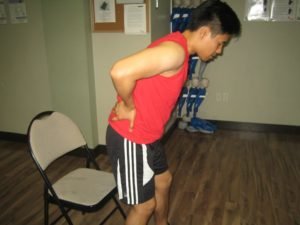Weight-bearing pain has been an upsetting problem that affects various joints in the body such as the knees, ankles, lower back, hips and the vertebral column. While walking, bending, running, twisting, standing and lying down, these body parts endure substantial pressure that can eventually lead to pain and injury.
This is true during exercises that involve high-impact movements and the added weight can take their toll. Weight-bearing pain might be a warning of various conditions such as strained muscles, inflammation of joints or even stress fractures. It is essential to fully comprehend the usual reasons why weight-bearing pain occurs and measures to alleviate the discomfort.
Common causes
Weight-bearing pain in the susceptible parts of the body is due to overload on a tendon, joint or muscle with excessive force. It might be a single event that triggers a knee or ankle injury, but more often the pain manifests after prolonged repetition such as in running.

The weight-bearing pain is prevalent among individuals who are overweight due to the added strain on the joints as well as the back. This is also true for those who engage in high-impact cardiovascular activities such as explosive resistance training or running on concrete surfaces.
Alternative exercises
Whether the weight-bearing pain is due to excessive exercise or too little, there are alternatives that can help the individual stay fit and feel better. Cutting down on weight will promote an improvement on joint health but running is not usually advisable.
It is recommended to try out cardiovascular exercises that do not require weight bearing such as recumbent cycling. Other physical activities such as swimming and rowing are other alternatives that can spare the joints from unwanted burden as well as strengthen the muscles in the back at the same time. Switching to a non-weight-bearing activity for a few weeks can help reduce the inflammation that causes the weight-bearing pain.
Useful tips to bear in mind
In case the weight-bearing pain is due to inflammation after engaging in a strenuous exercise or after a long day on your feet, you can apply an ice pack over the joint or muscle for up to 15 minutes every hour with light compression and rest.
Using brand-new footwear can also minimize the discomfort in the ankles, knees and hips since worn out ones no longer have adequate padding to shield the body as well as from the impact from running or walking. If the pain is mainly in the back, using a back brace during activity can prevent pain and injury.
The individual should also consult a personal trainer to make the most out of non-weight-bearing exercises. If the individual suffers from piercing or intense pain while performing normal weight-bearing activities or if the pain persists, it might indicate a stress fracture or a severe condition.
